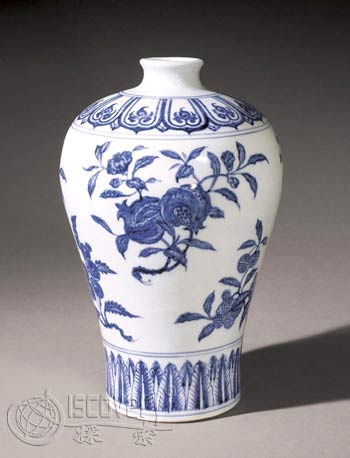Profound cultural background and unique artistic charm (1)
The plum vase, as an object with multiple uses such as wine storage, decorative display, and burial ware, was already popular since its appearance in the Tang Dynasty, became very fashionable during the Song Dynasty, and grew increasingly popular in the Yuan and Ming Dynasties with the maturity of blue-and-white porcelain. The shape varied slightly in different periods, but generally did not deviate from the basic features such as short neck, small mouth, broad-shouldered, round belly, tapering waist, and narrow ankle. The term "plum vase" only appeared in the late Qing Dynasty. Xu Zhiheng's "Yinliuzhai Sayci" said: "The plum vase has a fine mouth and a short neck, extremely wide shoulders, and becomes narrower down to the ankle, then slightly fuller at the foot. The small mouth is only proportionate to the slim bones of a plum branch, hence the name plum vase."




